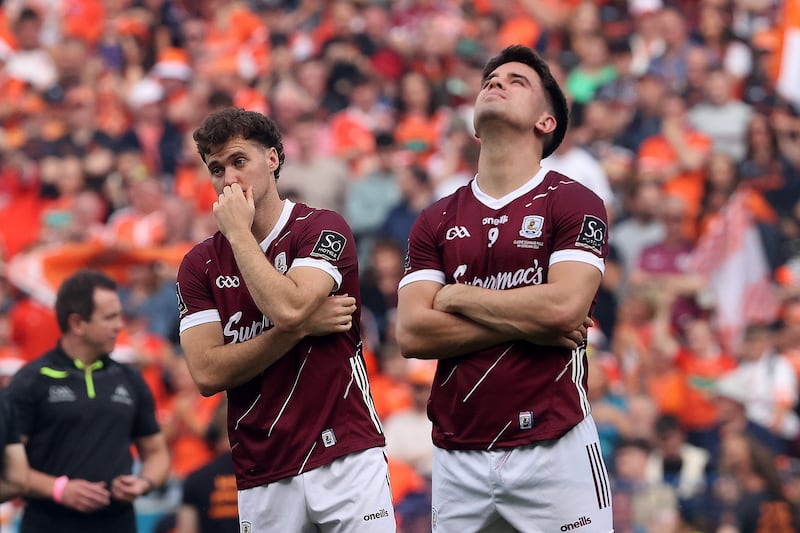Galway’s plight in losing three senior All-Ireland finals in the same year was widely publicised – even prospectively in the lead-up to defeat in the camogie showcase on Sunday.
The unwanted distinction involved three successive weekends of losing finals, first men’s, then women’s football followed by Sunday’s narrow defeat by defending champions, Cork.
Coincidentally, Cork is the only other county to have lost three All-Ireland finals, in 1956.
Sixty-eight years ago, Cork’s situation was aggravated by a public health crisis, a serious outbreak of poliomyelitis or polio in Cork.
RM Block
The first major outbreak in Ireland had come between 1942 and ‘43 – even though the disease only became notifiable in 1941 – and carried a massive mortality rate of nearly 30 per cent or 487 cases and over 133 deaths.
It was infectious and posed a particular threat to children.
The original outbreak doesn’t appear to have impacted on GAA activity, possibly because wartime restrictions reduced the impact. Ironically, Cork had escaped on that occasion.

The first case in 1956 came in June and as the outbreak picked up during the summer, the impact was only felt by the time of the All-Irelands and remedial action required only because the epicentre of Cork had a team in each of them.
But there were impacts. Cork’s opponents in the camogie semi-final, Mayo, withdrew because of health concerns and the footballers struggled to find counties prepared to play challenge matches.
On the week of the footballers’ semi-final against Kildare, The Irish Times reported that in August 1956 the Dublin City medical officer had appealed to the Cork chair PA Murphy to ask “supporters not to bring children under 14 years” to Croke Park.
“As a large number of Cork people are expected to make the journey to Dublin to attend the match, Dr O’Regan wants to guard against the possibility of introducing polio into Dublin.”
Anecdotally, according to historian Dr Ida Milne, who specialises in the subject of disease and public health and who spoke to this newspaper during the pandemic of four years ago, there were major apprehensions about dealing with Cork.

“There was the story about a cobbler in Gorey, who did the boots for the Cork team in the ‘50s, and his children caught it. My cousin told me that – although I didn’t look into it in any detail!
“But he also said that he remembers his father, who had young children at the time and was a dairy farmer. People would come to the yard to buy milk but he set up a table at the end of the lane and left the churns there and wouldn’t let people into the yard in case the children got it.”
Cork weren’t involved in a hurling semi-final because of the draw that year a Central Council decision was still required to defer the finals, as the epidemic worsened.
Hurling opponents Wexford were gracious about the request and their Central Council delegate and star forward Nicky Rackard, who would score 1-5 in the final against Cork, assured the meeting that his county would “co-operate to the fullest extent”.
The hurling final went down in legend. It remained Wexford’s last championship win over Cork for 50 years and marked Christy Ring’s last appearance in an All-Ireland and is still the second-highest attendance at a hurling final, 83,096.
A week later, Antrim, who had shocked nine-in-a-row chasing Dublin in the semi-final beat Cork by four points in the camogie All-Ireland final.
In the football final Cork lost to Galway and the ‘Terrible Twins,’ Frank Stockwell and Seán Purcell in the GAA’s last public health-delayed final before 2020.



















